Ever wondered what makes that perfect cup of espresso so captivating? One key element that stands out is the crema – the rich, golden-brown foam that sits atop your espresso shot. Crema is more than just a pretty face; it’s a sign of a well-extracted espresso, indicating freshness, quality, and proper brewing techniques.
This aromatic froth is formed when hot water emulsifies coffee oils under high pressure, creating tiny bubbles that float on the surface. It enhances the flavor, texture, and overall experience of your espresso. In this guide, we’ll explore what crema is, why it matters, and how you can achieve that perfect espresso crema layer in every shot. So, grab your portafilter, and let’s dive into the world of brewing!
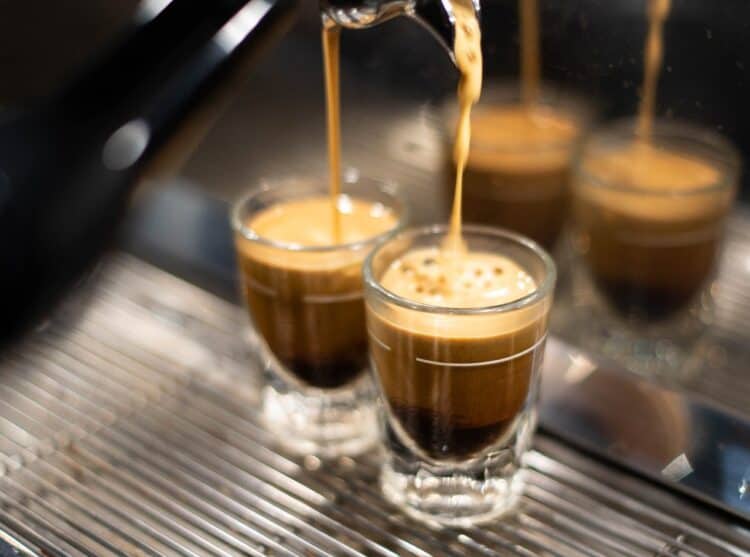
What is Crema?
Crema is the aromatic, reddish-brown froth that crowns a shot of espresso. This delicate layer forms when hot water emulsifies coffee oils under high pressure, creating a layer of tiny bubbles. Crema not only adds to the visual appeal of an espresso but also enhances its flavor and mouthfeel.
Why Crema Matters
- Visual Appeal: A thick, rich crema is often seen as a hallmark of a well-executed espresso shot. Its presence indicates a proper extraction process and high-quality beans.
- Flavor Profile: Crema contains concentrated flavors and aromatic oils, adding depth and complexity to your espresso. It acts as a preview of the espresso’s full palate.
- Mouthfeel: The crema contributes to a silky texture and fuller body, enhancing the overall espresso experience.

Formation of Crema
Crema forms when hot water emulsifies the oils in finely ground coffee beans under high pressure. This process releases carbon dioxide that was trapped in the coffee during roasting, which creates tiny bubbles that form the froth. The presence of certain compounds, like lipids and proteins in the coffee, also plays a crucial role in stabilizing the crema.
Factors Influencing Crema Quality
- Freshness of Coffee Beans: Freshly roasted beans retain more natural oils and gases, which are essential for a lush crema.
- Grind Size: A consistent, fine grind is crucial to ensure even water distribution, leading to the optimal extraction of oils necessary for the frothing process.
- Brew Pressure: Proper espresso machines deliver high levels of pressure (around 9 bars), which is key to forming crema.
- Water Quality: Using clean, filtered water ensures no off-flavors that might affect the espresso’s taste and crema production.
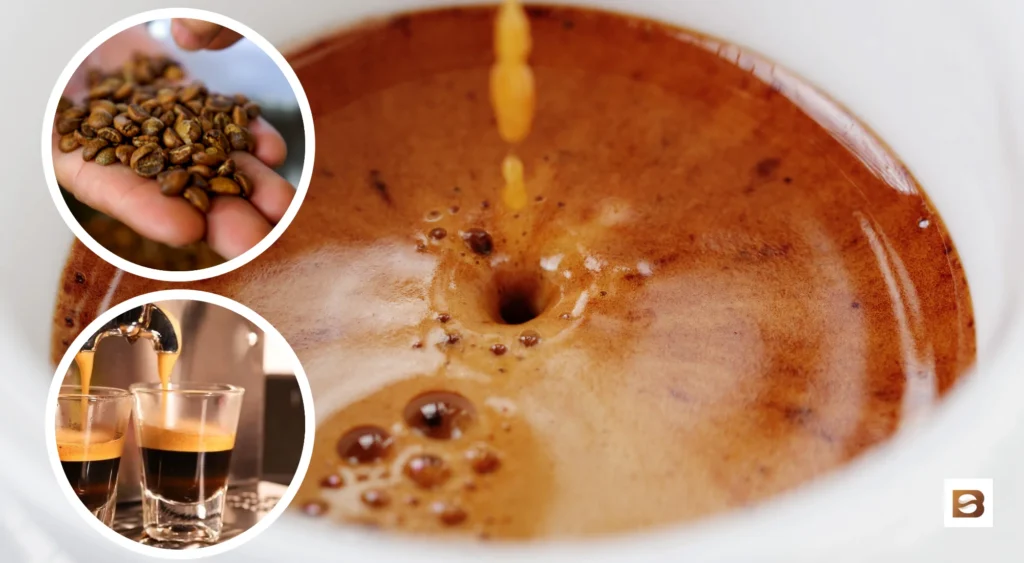
Step-by-Step Guide to Perfect Crema
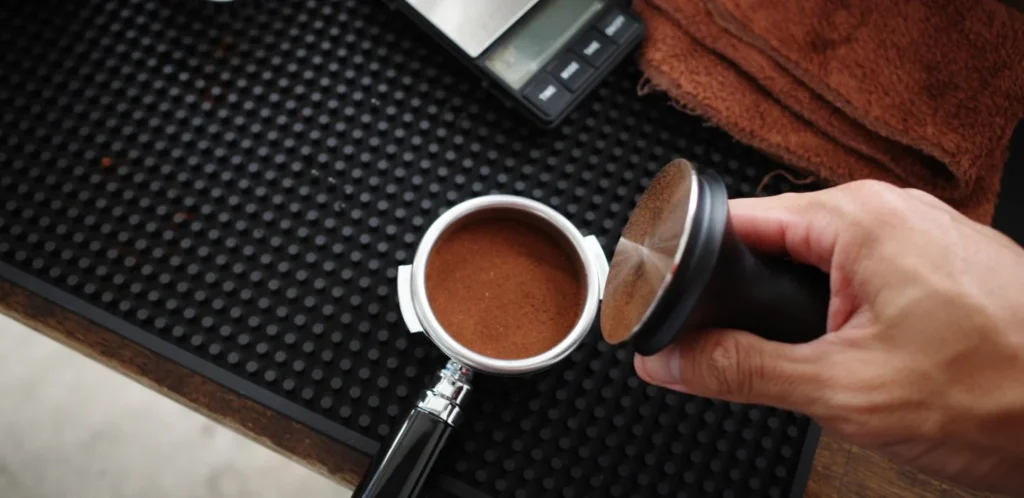
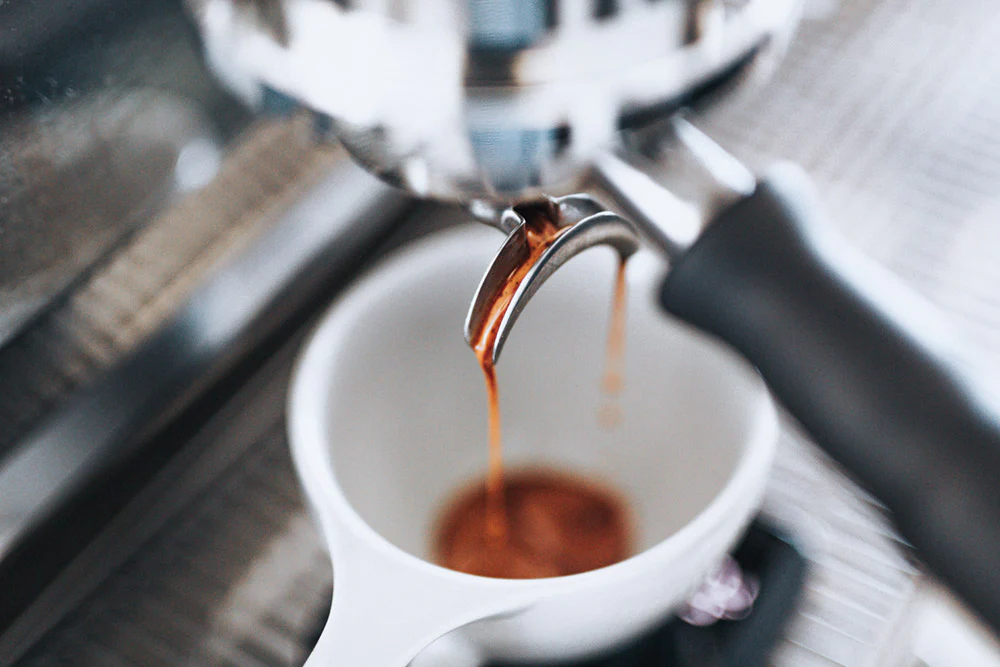
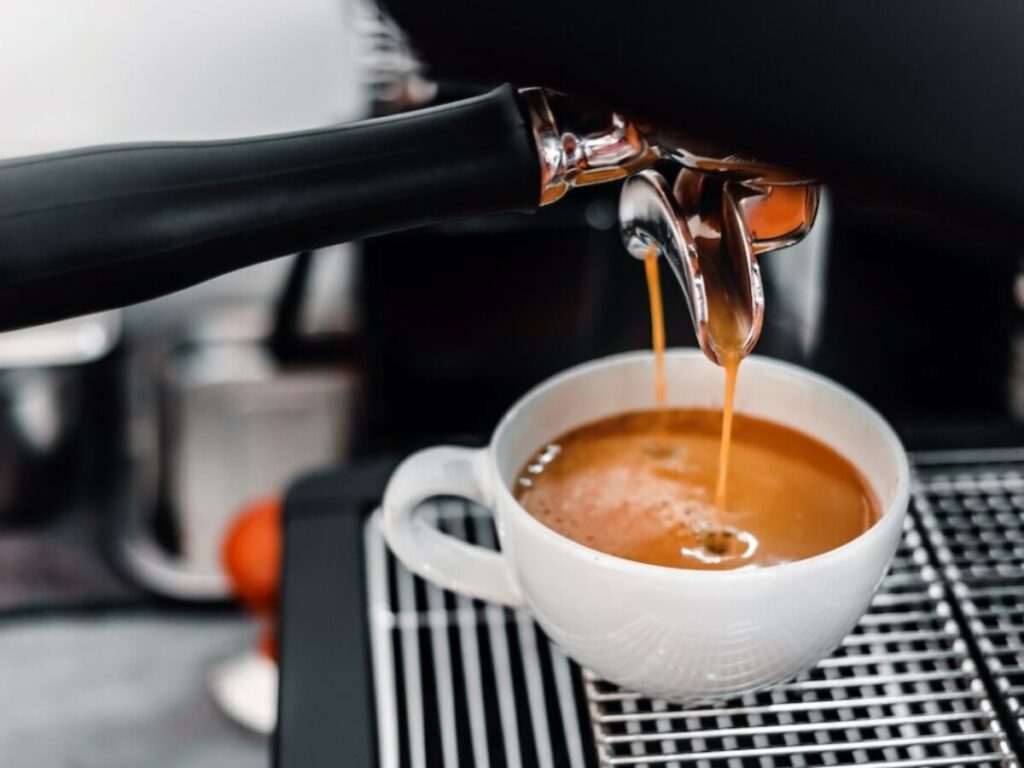
1. Quality Beans
Start with fresh, high-quality coffee beans. Ideally, use beans roasted within the last two weeks. For the best crema, look for beans labeled as espresso roast, which are typically roasted longer for a richer, deeper flavor.
2. Proper Grind Size
The grind size is crucial. Too coarse, and the water will flow through too quickly, resulting in weak crema. Too fine, and you might get a bitter, over-extracted shot. Aim for a fine grind, slightly finer than table salt but not as fine as powdered sugar.
3. Dose and Tamp
- Dose: Use 18-20 grams of coffee for a double shot.
- Tamp: Tamp the grounds evenly with a firm, level pressure. Uneven tamping can lead to channeling, where water finds the path of least resistance and causes uneven extraction.
4. Water Temperature and Pressure
- Temperature: The water should be between 195°F and 205°F (90°C – 96°C). Too hot or too cold, and you’ll compromise the crema.
- Pressure: An espresso machine should apply about 9 bars of pressure. This is non-negotiable for achieving that luscious crema.
5. Extraction Time
Aim for an extraction time of 25-30 seconds. If it’s too short, your crema will be thin and pale; too long, and it’ll be bitter and burnt.
6. Freshness and Consistency
Ensure your equipment is clean and your routine is consistent. Consistency is key in brewing perfect espresso shots with beautiful crema.
Tips for Achieving Perfect Crema
- Use Fresh Beans: Opt for beans roasted within the last two weeks.
- Dial in the Grind: Adjust your grinder to achieve a fine, consistent grind.
- Proper Tamping: Use about 30 pounds of pressure to tamp the coffee evenly in the portafilter.
- Optimal Water Temperature: Brew with water between 195°F and 205°F (90°C – 96°C).
- Consistent Pressure: Ensure your machine applies around 9 bars of pressure during extraction.
Troubleshooting Common Issues with Espresso Crema
Thin Crema
Cause: Often caused by under-extraction, where water passes through the coffee grounds too quickly, failing to emulsify enough oils. Solution:
- Check Grind Size: Ensure your grind is fine enough. If it’s too coarse, the water will flow through too quickly.
- Tamping Technique: Apply firm, even pressure when tamping. An uneven or too light tamp can lead to under-extraction.
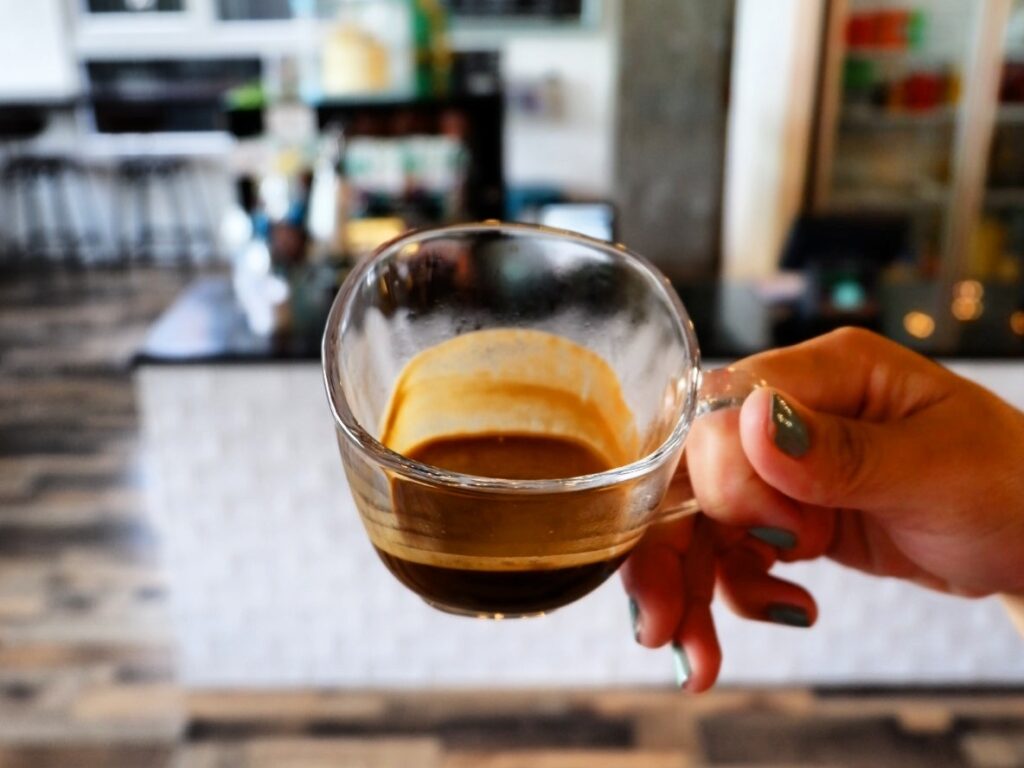
Bitter Crema
Cause: Typically a result of over-extraction, which occurs when water passes through the coffee grounds too slowly, extracting too many bitter compounds. Solution:
- Adjust Grind Size: Make the grind slightly coarser.
- Dose: Ensure you’re using the correct amount of coffee.
- Extraction Time: Aim for an extraction time of 25-30 seconds. If it’s taking longer, adjust the grind or dose accordingly.
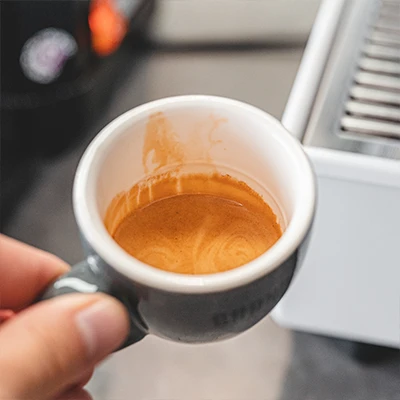
No Crema
Cause: Could be due to stale beans, incorrect grind size, or issues with the espresso machine. Solution:
- Use Fresh Beans: Coffee beans should be used within 1-2 weeks of roasting.
- Check Grind Size: Make sure the grind is neither too coarse nor too fine.
- Espresso Machine Maintenance: Regularly clean and maintain your machine to ensure it’s functioning properly.

Conclusion
Achieving the perfect espresso crema is a rewarding journey that blends art and science. By focusing on key elements such as using fresh beans, adjusting the grind size, and ensuring proper tamping and extraction techniques, you can significantly enhance the quality of your crema. Pay attention to water quality and machine maintenance to avoid common issues like thin or bitter crema.
Remember, practice and experimentation are crucial. Each adjustment you make brings you closer to that ideal shot of espresso with a rich, velvety crema. So, keep refining your technique, enjoy the process, and soon you’ll be pulling espresso shots like a pro. Happy brewing!
Disclosure: Our blog contains affiliate links to products. We may receive a commission for purchases made through these links. However, this does not impact our reviews and comparisons. We try our best to keep things fair and balanced, in order to help you make the best choice for you.


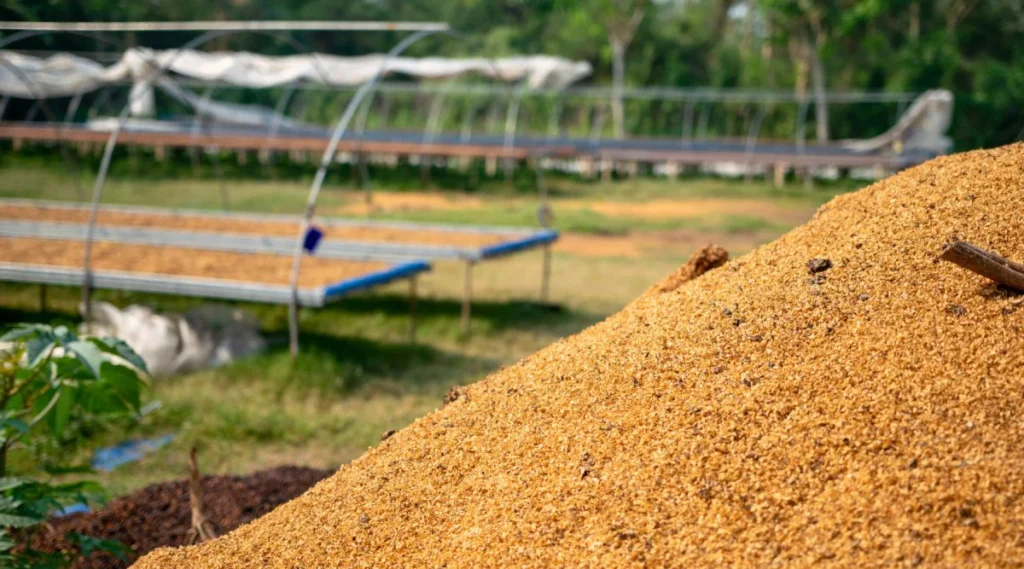


One Response